This year almond trees blossomed earlier.
Montblanc
Almond trees at Albinyana and Masllorenç.
Thanks to J.







Leaves in the trees
Fallen leaves
From the perspective of bureaucracy and administrative documents, our life begins registering a birth at the register Office and ends with a death certificate. In an excellent article in the New Yorker, Kathryn Schulz uncovers the story of death certificates and the list of death causes, from around 81 in the 17th century, to 14.000 in the latest WHO list. With a mortality rate of 7.89 per thousand, in 2014 there will be around 50 million deaths with 25 million death certificates issued where a cause will be specified. Schulz points that this death bureaucracy is the consequence of modern democracy, “if everyone counts, everyone must be counted”.
The antecedent of modern death certificates are the Bills of mortality, weekly lists of the plague deaths. By 1629 parish clerks were ordered to report deaths from other causes than plague. In 1662, John Graunt, a pioneer demograph, published ”Natural and Political observations made upon the Bills of Mortality” where he analized the mortality rolls in order to prevent bubonic plague from spreading. He compiled a list of 81 causes classified in four categories, “chronic diseases, epidemic diseases, conditions that killed children and outward griefs”. In 1893, an international commitee leaded by Jacques Bertillon would enlarge the list up to 161 causes classified in 14 categories following anatomical criteria. Today the list is managed by the World Health Organization and codes around 14.000 causes classified in 22 groups following anatomical criteria.
The ICD10 (the 10th revision of the International Statistical Classification of Diseases and Related Health Problems) lists the following diseases groups: (I) infectious and parasitic diseases, (II) Neoplasms, (III) Diseases of the blood, (IV) Endocrine, nutritional and metabolic diseases, (V) Mental and behavioural disorders, (VI) Diseases of the nervous system, (VII) Diseases of the eye, (VIII) Diseases of the ear, (IX) Diseases of the circulatory system, (X) Diseases of the respiratory system, (XI) Diseases of the digestive system, (XII) Diseases of the skin and subcutaneous tissue, (XIII) Diseases of the musculoskeletal system, (XIV) Diseases of the genitourinary system, (XV) Pregnancy, childbirth, (XVI) Conditions originating in the perinatal period, (XVII) Congenital malformations, (XVIII) other non classified.
External casues are listed in (XIX) Injury, poisoning and certain other consequences of external causes (by the way, an excellent source of inspiration for crime fiction writers) and (XX) External causes of morbidity and mortality. Other codes are (XXI) Factors influencing health and (XXII) other codes for special purposes. In Catalonia, the most common causes are tumors and heart diseases, which add up to more than 60%.
The question “why” we die or “from what” we die is not easy to answer, particularly if we want to identify, not only the “immediate cause” such as rupture of myocardium, but also the “underlying cause” which would be Atherosclerotic coronary artery. Reporting the underlying cause is difficult, and not only because lack of training but mainly because in most cases, the rellevant information is not available. Schulz goes on discussing the issue quoting Harvey Fineberg from the Institute of Medecine: “if someone dies of a heart attack, you don’t say he died of high cholesterol, sedentary life style and a forty-pack-year history of smoking”. And, notwitstanding, a 1993 paper by Foege and mcGinnis, showed that half of all deaths in US in 1990 could be attributed to nine causes not included in death certificates: tobacco, diet and physical activity, alcohol, microbial agents, toxic agents, firearms, sexual behavior, motor vehicles, and illicit use of drugs. Omitting them is not without consequences as health policies can be focused to new drug research instead of promoting healthy habits.
If the question that interests physicians is about the “cause” of death, the question that the bereaveds pose is “how” someone died. We want to know if “a loved one suffered or was at peace, or if her death was meaningful, or wheter we could have prevented it”. About this, Katrhyn Schulz concludes, the death certificate can’t say anything, it is not Auden’s elegy for Yeats. “We die because we were born; because we are mortal; because that is, after all, life”.
La Segarra. Flowers at dusk.
The Grevolosa beech forest near Torello is not huge what it contains some extraordinary trees, some of them catalogued as heritage trees.
It can be visited in a short walk leaving from “El molí de Bracons” on route BV 5224. Following 20 min through a track, there is a nice narrow path through box bushes, like a corridor that does not foretell de amplitude of the space one encounters when it reaches the Grevolosa Forest with its towering beeches.
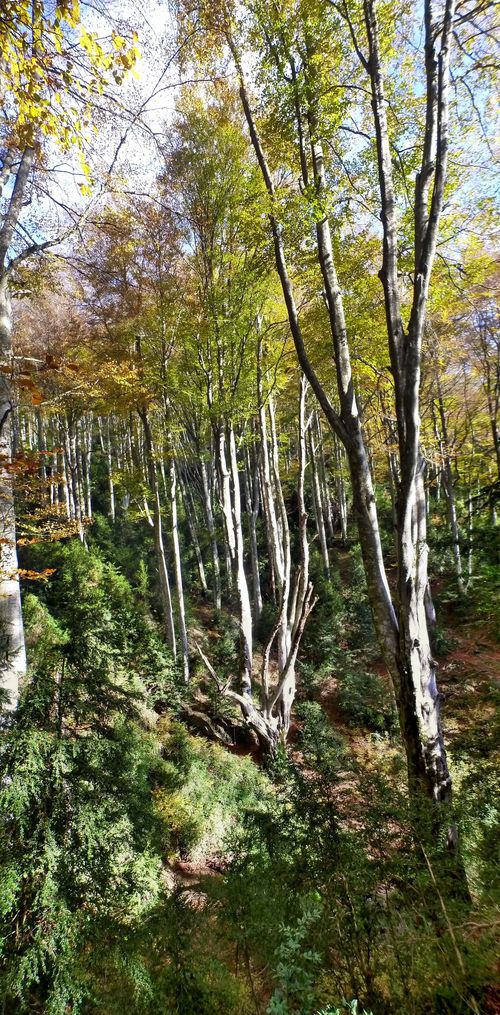
Neither sight nor the camera have field amplitude enough to scope it without scrolling. I have tried to convey this by stitching several vertical pictures (using the excellent free stitching software Microsoft ICE, planarmotion3 mode).
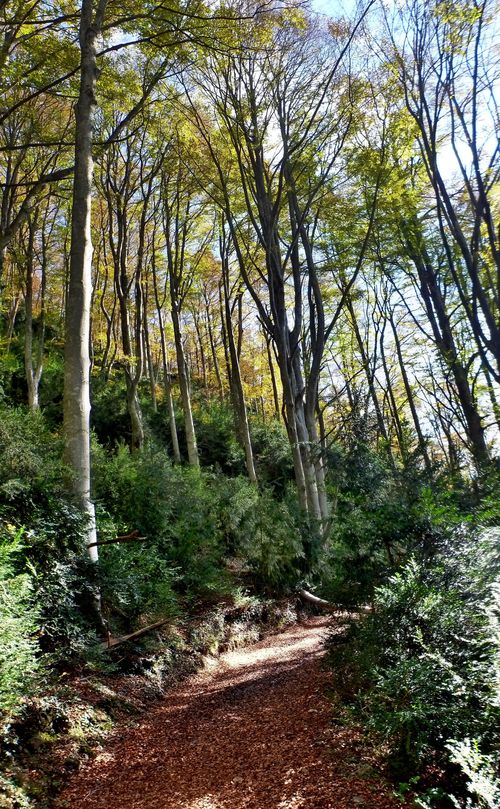
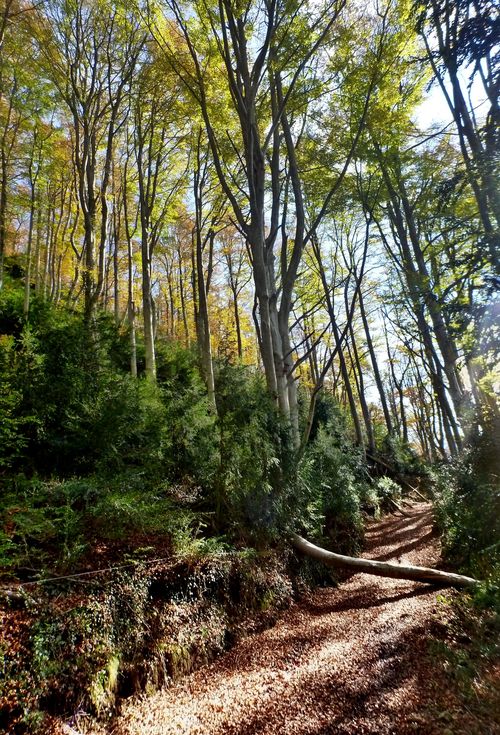
Debre Libanos, perhaps the most revered monastery in Ethiopia. At a funeral, the men carry the coffin on the shoulders. Behind, some women mourn and cry. We are told that there are people close to the family, not paid mourners as the ones found in other cultures. In Spain, “plañideras” are back, after being banned by the church (news). In Queretaro (Mexico) there are even contests. In rural Ethiopia, all the community is involved in the ceremony. Each family contributes to a common fund and burial expenses are shared.
Later, in another funeral, maybe someone wealthier, some men are on horseback, and at one point, the women jump in a synchronized manner:
I am fascinated by this way of expressing an emotion, collectively, with the body. Some days later, in the south, in Turmi, in a Hamer community, and in a very different cultural context, I see again women jumping, this time on occasion of the famous bull jumping ceremony when a boy has to walk over the back of a some bulls in a row without falling. You can feel the impact of the women on the floor.
Why is that this form of expressing emotions can be found in two relatively different areas and cultures? What would be the map of it?
It makes me wonder about the similarities between the forms of devotion in the Ethiopian Orthodox Church and Judaism or Islam. The cult is not only indoors, but also in the open space surrounding the building, usually circular or octagonal: It has an important role, similar to that found in mosques. People must remove their shoes, as Jews and Muslims, too. Before entering the compound, people stop at the door, touch the wall and pray. Despite the differences in what is believed, the form of worship is much closer to Jews and Muslims than to the Catholic or Greek Orthodox Church. Could this be explained by climate? By the fact that they are fundamentally pastoralists?
In this 1 min video there is a chant recorded in a church compound; ullulation at 40’’.
In the north, graves in cemeteries are protected by railings. In the south, graves are scattered; it seems that people can be buried in the land where the family lives.
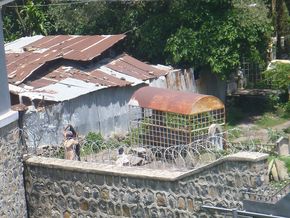
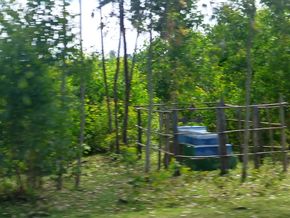
This year I could not come out yet to greet you and, as I feared, because of this delay and a strong wind storm, when I reached the Segarra countryside, all of you had no flowers left. It was getting dark when I found you, the flowers waiting at dusk.
<
Leaves
Shadows
Green and yellow
Pool
Leaves and water
Mirror